Patient with a fixed anterior prosthesis cemented on natural teeth, whose recent fracture causes mobility and instability of the prosthesis. He comes in search of a solution to improve the esthetics of his smile. Initially, a treatment based on the removal of the prosthesis and the damaged teeth, and the placement of four implants in positions 22, 21, 12 and 14, correcting their emergence profile by means of conical transepithelial abutments angled at 17 degrees, was chosen. Subsequently, the resorption of the gingiva uncovered the shoulder of one of the abutments and it was decided to replace them with straight Multiunits, saving the vestibular emergence by means of BHS30 sockets at 20 degrees and BHS30 screws.
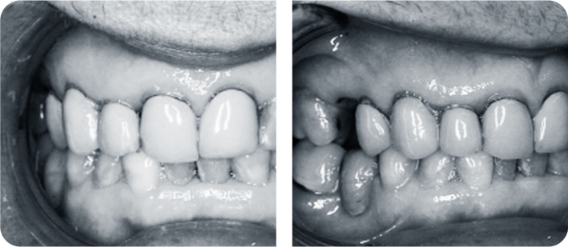
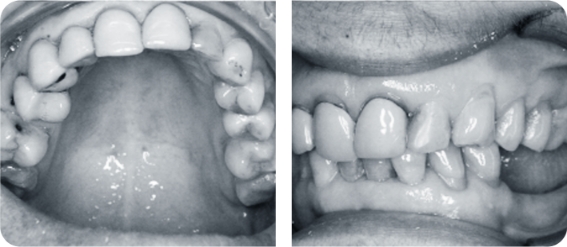
a. Initial scenario of the case after the diagnostic visit, where the deterioration of the anterior cemented prosthesis is observed.
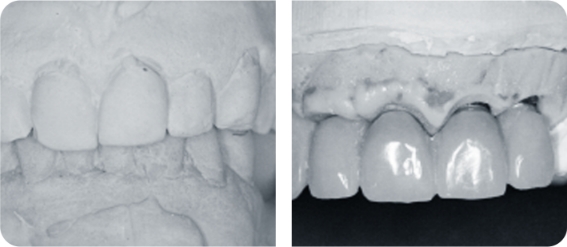
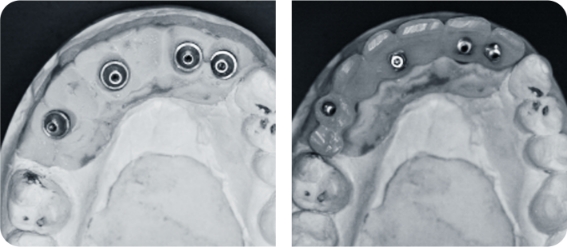
b. After designing the treatment plan, the laboratory makes a temporary acrylic structure for immediate loading to be screwed on four implants, whose vestibular emergence profile is corrected by placing Multi-Unit abutments angled at 17º.
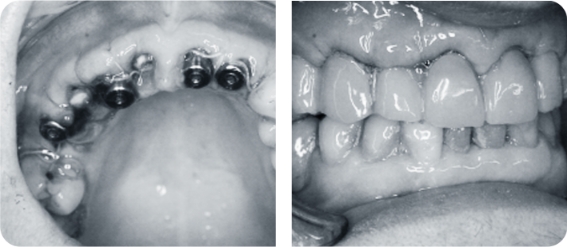
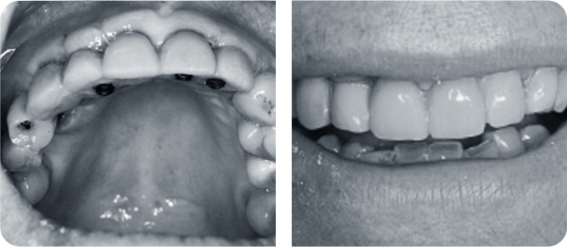
c. After removal of the damaged structure and natural teeth, implants are inserted and immediate loading is performed, with good esthetic results.
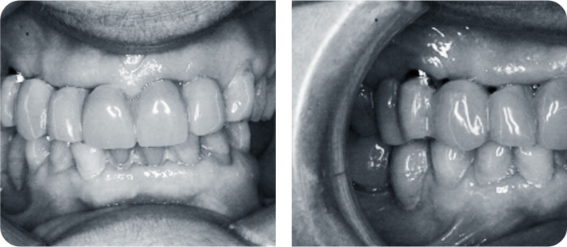
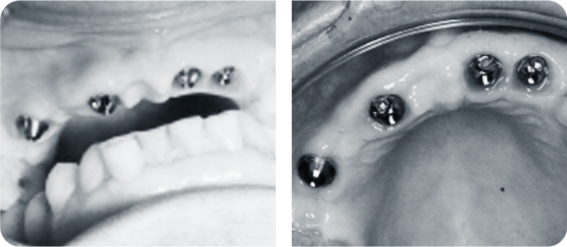
d. After 8 months, due to the resorption of the gingival tissue, the shoulder of the transepithelial in position 14 is exposed.
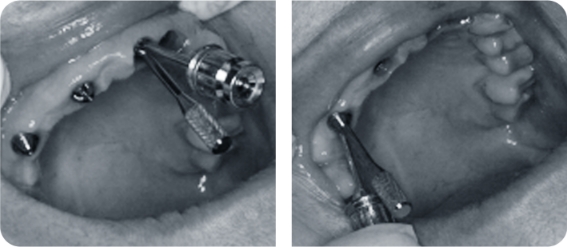
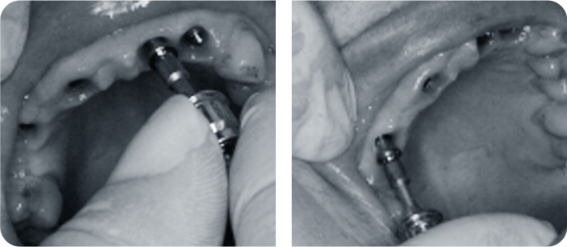
e. The angled abutments are replaced by straight Multi-Unit abutments, with a 1 mm shoulder, to reduce the profile of the prosthesis.
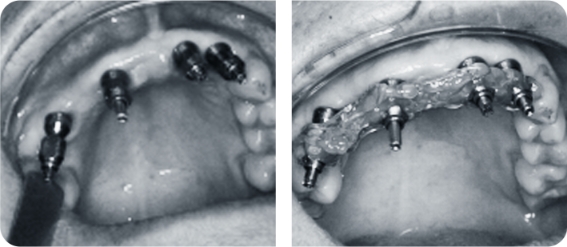
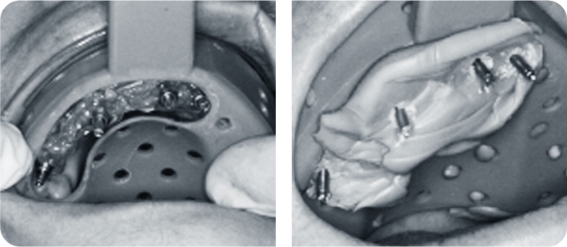
f. Taking impressions with open tray for the reconstruction of the laboratory model. The printing pillars show emergencies we face.
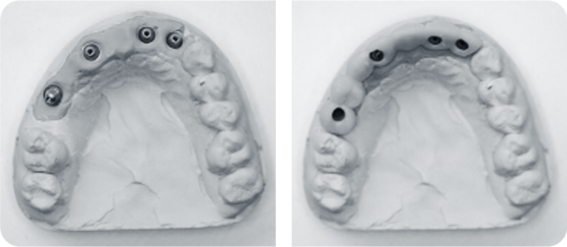
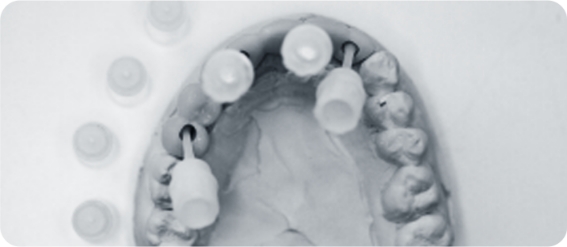
g. Once the straight Multi-Units have been incorporated into the model, the prosthesis is fabricated by casting on 20º BHS30 angled castable cylinders, which will be fixed to the Multi-Unit abutments with compatible BHS30 screws.
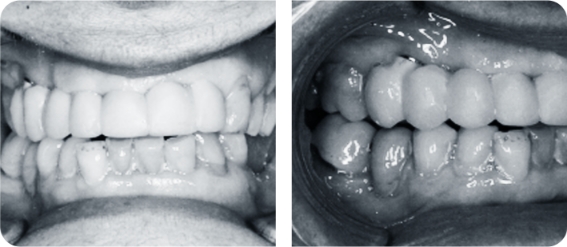
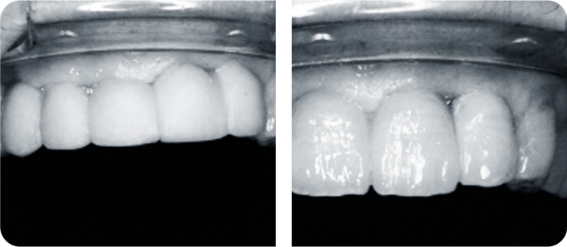
h. After a successful bisque test, the ceramic is glazed and the prosthesis is screwed into the mouth.
